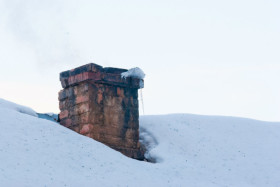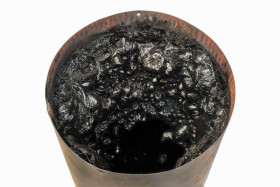Preparing your chimney for winter
Your chimney gets the most use during the cold winter months, and it also takes the most abuse. When temperatures drop, your chimney bears the heat of your fireplace as well as the cold winter temperatures, ice and snow. There are several things you can do to prepare your chimney for winter fires and winter weather.
Schedule your annual cleaning and inspection.
Preparing your chimney for winter begins with your annual chimney cleaning and inspection by a CSIA-certified chimney sweep. The cleaning will make sure that your chimney is free from creosote, blockages, cracks and water damage. When your chimney undergoes its annual cleaning and inspection, you can feel confident that your chimney is ready for the fire-burning season.
Install a chimney cap.
Winter brings the potential for water damage to your chimney, and when water penetrates your chimney, it can leak down the walls of your flue, damaging the metal liner or masonry, rusting your damper and even causing damage to your fireplace. According to the Chimney Safety Institute of America, the best way to protect your chimney from water damage is installing a chimney cap. Installing a chimney cap this fall can have your chimney ready to fend of rain, ice and snow.
Check your chimney’s flashing.
The flashing around the base of your chimney keeps water from running into your home where the roof meets the chimney. Over time, that flashing can break down and leave your home susceptible to water damage. Before the winter snow and ice, make sure your flashing is secure, and have it repaired, if needed. If your chimney is on a portion of your chimney that is exposed to a lot of rainwater or melting snow, you can consider installing a metal cricket to divert the water from the base of your chimney.
Repair any cracks.
Over time, your chimney’s masonry, whether it’s the bricks or your chimney crown, can crack or spall. Those cracks can become worse during the winter when your chimney is exposed to excess moisture and freezing temperatures. Make sure you address any damaged masonry now so problems don’t become worse this winter.
Consider waterproofing.
Consider applying a waterproof seal to the outside of your chimney to protect the chimney from water damage. When water seeps into your chimney’s masonry during the winter months, that water can freeze, expanding and causing cracks to the brick, the same way it causes potholes in the road. Chimney water proofing keeps water out while still allowing your chimney’s masonry to breathe.
Call the chimney experts.
As you prepare your chimney for winter, call the chimney experts at Your Chimney Sweep. We can provide you with your annual chimney cleaning and inspection, repair any problems you may have with your chimney and talk to you about waterproofing to protect your chimney’s masonry. We can help you prepare your chimney for this winter’s harsh weather!


